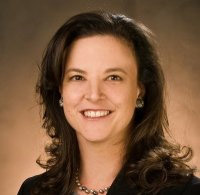
Changing face of teleworking
If the monster snowstorm hits and shuts down the government, Senior Correspondent Mike Causey says key people will come into the office or work from home.
Back in the day, a snowfall feds would laugh off in Chicago, Buffalo or Butte was enough to close Washington down. Some folks outside the Beltway still insist the D.C. Metro Area is Wimp Central when snow is in the air.
In the not-so-distant past, a decision to keep non-emergency Washington- area feds off the roads was usually ridiculed by the media and politicians. Early in his first term, President Barack Obama joked that after his years in Chicago, he was shocked at how workers here were cowed by a little snow. By the same token, a decision to call feds in, then release them early because of ice or snow is usually denounced as stupid, heartless and dangerous.
When it snows here, the director of the Office of Personnel Management is the woman, or man, in the not-so-hot seat.
Then along came teleworking. And now the worm has turned, to some degree. Qualified teleworkers earn their keep. They work when others, not among the official teleworker elite, get the snow day off.
In the last century, many forward-thinkers thought that once teleworking got rolling, the majority of employees would NOT be working from home. They envisioned teleworking centers in places like D.C. and its Maryland and Virginia suburbs. There were about a dozen in the metro area. I visited three of them and was most impressed. I felt like Capt. Kirk on an advanced mission.
The idea was that people from a variety of agencies would leave home and report to work at a telework center, say halfway between home and office. They could avoid a long commute, and find all the comforts of home and office (like tech support and dedicated telephone lines) without the temptation of daytime TV. Or naps. The General Services Administration and Agriculture Departments pioneered the concept and offered individual employees and agencies various incentives — like reduced or no rent — to sign up.
The concept had lots going for it. Reduced commuting time for employees. An office atmosphere (with tech support) in a more relaxed environment. Bosses who didn’t like the idea of employees working from home were more secure if they were in a work environment. Employees who couldn’t, or didn’t want to, work from home welcomed the idea of a short drive to an informal office where everybody knows your name. What’s not to like?
The telework centers also sidestepped the potential problems that plagued early teleworking attempts. Like who would pay for the phone line? What if an employee’s home “office” or workspace was a tray in front of the TV set? What would happen (like liability and workman’s comp) if the employee was injured on-the-job at home? What if he/she stepped on a toy, or Billy’s runaway hamster and fell? The Defense Department drew up plans for surprise inspections of teleworkers.
With each potential obstacle to teleworking, it seemed the centers were the answer. So what happened?
Uncle Sam built or converted the telework centers, stocked them and advertised them. And nobody (as in hardly anybody) came. Centers meant to house and support hundreds of workers found they had only a few customers each day. In 2011, The Washington Post wrote the obituary for the telecenters in Maryland, Virginia and West Virginia. It said that they had only 300 regular users, which is less than a tenth of 1 percent of the feds in this area.
The price tag for the telecenters was $3 million per year, or $10,000 per actual user.
“It was one of those seemed-like-a-good-idea-at-the-time concepts that just didn’t work in practice,” said a former top GSA official.
Teleworking from home is the clear winner.
So if you are grounded by the pending snowstorm this weekend or early next week, odds are most feds in the D.C. area will get some time off. Emergency personnel will be expected to be on the job no matter what and a record number of people will be teleworking from their home offices — assuming there’s power, of course.
Nearly Useless Factoid
Painted Dreams, the first series considered to be a “soap opera”, premiered Oct. 20, 1930, on Chicago radio station WGN.
Source: Wikipedia
Copyright © 2024 Federal News Network. All rights reserved. This website is not intended for users located within the European Economic Area.
Mike Causey is senior correspondent for Federal News Network and writes his daily Federal Report column on federal employees’ pay, benefits and retirement.
Follow @mcauseyWFED




